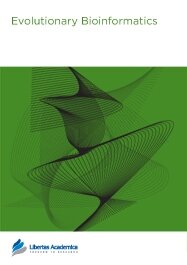

Publication Date: 13 Nov 2011
Type: Original Research
Journal: Evolutionary Bioinformatics
doi: 10.4137/EBO.S7565

Color may be very useful to visualise complex data. As far as taxonomy is concerned, color may help observing various species’ characteristics in correlation with classification. However, choosing the number of subclasses to display is often a complex task: on the one hand, assigning a limited number of colors to taxa of interest hides the structure imbedded in the subtrees of the taxonomy; on the other hand, differentiating a high number of taxa by giving them specific colors, without considering the underlying taxonomy, may lead to unreadable results since relationships between displayed taxa would not be supported by the color code. In the present paper, an automatic color coding scheme is proposed to visualise the levels of taxonomic relationships displayed as overlay on any kind of data plot. To achieve this goal, a dimensionality reduction method allows displaying taxonomic "distances" onto a Euclidean two-dimensional space. The resulting map is projected onto a 2D color space (the Hue, Saturation, Brightness colorimetric space with brightness set to 1). Proximity in the taxonomic classification corresponds to proximity on the map and is therefore materialised by color proximity. As a result, each species is related to a color code showing its position in the taxonomic tree. The so called ColorPhylo displays taxonomic relationships intuitively and can be combined with any biological result. A Matlab version of ColorPhylo is available at http://sy.lespi.free.fr/ColorPhylo-homepage.html.
Meanwhile, an ad-hoc distance in case of taxonomy with unknown edge lengths is proposed.
PDF (2.18 MB PDF FORMAT)
RIS citation (ENDNOTE, REFERENCE MANAGER, PROCITE, REFWORKS)
BibTex citation (BIBDESK, LATEX)
XML
PMC HTML
The team at Evolutionary Bioinformatics were fantastic in everyway. They were very accessible and helped with all aspects of getting the paper published in a timely fashion. The immediate online help option available through the website is a great option.

All authors are surveyed after their articles are published. Authors are asked to rate their experience in a variety of areas, and their responses help us to monitor our performance. Presented here are their responses in some key areas. No 'poor' or 'very poor' responses were received; these are represented in the 'other' category.See Our Results
Copyright © 2013 Libertas Academica Ltd (except open access articles and accompanying metadata and supplementary files.)
FacebookGoogle+Twitter
PinterestTumblrYouTube